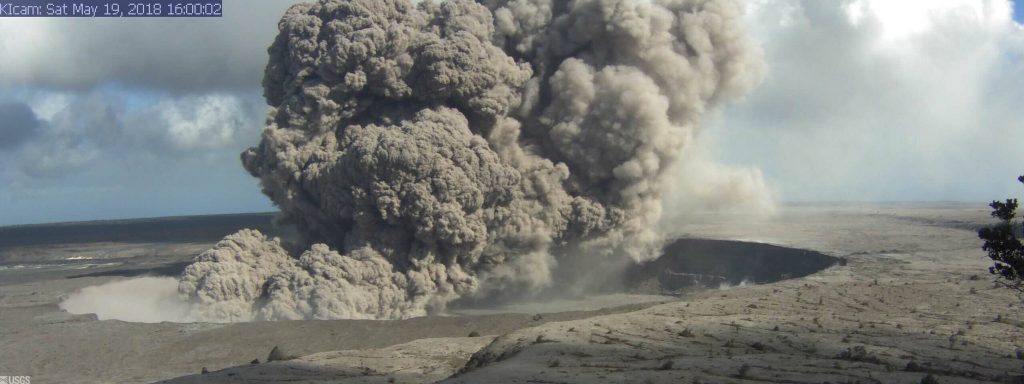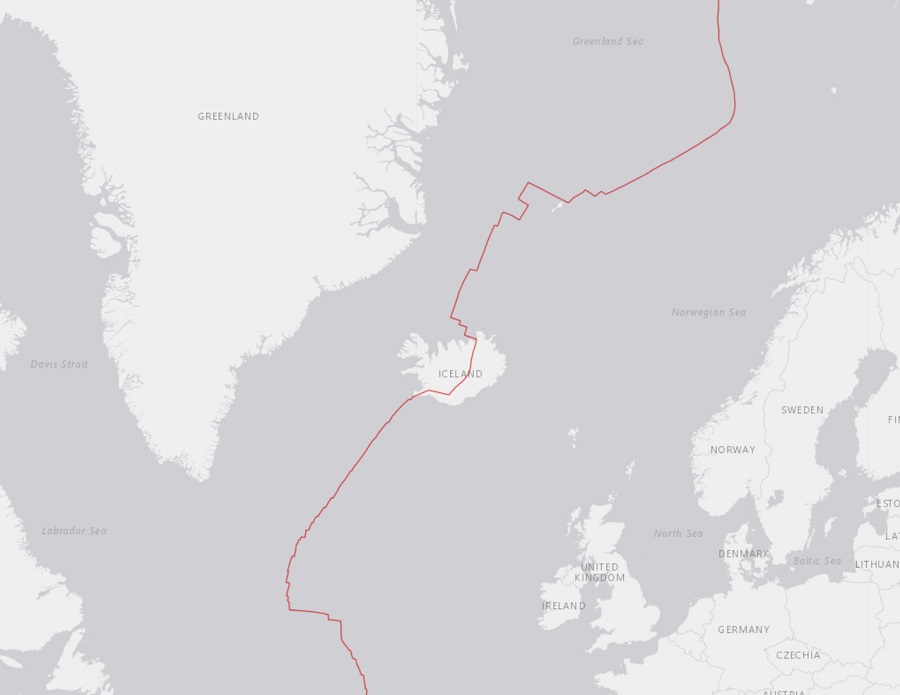
Within the last week, more than 18,000 earthquakes have rattled the island nation of Iceland in the North Atlantic and scientists are concerned that a volcanic eruption could be imminent there. In addition to threatening people there, a volcanic eruption in Iceland could also disrupt air travel between North America and Europe; the emission of any volcanic ash into a common path used by aircraft on trans-Atlantic routes could force a temporary grounding until the eruption subsides.
Iceland is no stranger to earthquakes or volcanoes. Iceland sits on the border of the North American plate and the Eurasian plate, two large tectonic plates that are growing apart. As the plates shift, earthquakes and volcanoes can erupt, shaking the ground and the ocean while releasing magma stored deep inside Earth. The split between these two plates is known as the Mid Atlantic Ridge and in addition to be a common epicenter of Atlantic earthquakes, it can also be a pathway for magma to escape to the surface. When magma finds its way to the surface, a volcanic eruption is born. Today, Iceland has about 30 active volcanoes. And it may have one more soon.

An earthquake swarm began on Iceland last week on February 24, kicking off with a magnitude 5.7 earthquake. Since then, more than 18,000 earthquakes have struck, rattling the ground and the nerves of the people there. Volcanologists studying the seismic activity in Iceland say its been intensifying there since December 2019. While volcanoes in southwestern Iceland have been relatively quiet for 800 years, but that could be about to change.
The Icelandic Meteorological Office says magma movements are the likely reason behind the surge of earthquake activity there. Based on their expert opinion, they believe a significant volcanic eruption could happen in the coming days or weeks.
In Hawaii in 2018, home of the United States’ most active volcano, scientists saw a similar surge of seismic activity ahead of that major eruption; they’ve also saw a surge of seismic activity ahead of the most recent eruption which began at the summit in December. The same could be happening in Iceland now.
#Kilauea timeline of #seismic activity:
Dec 20, 2020
~8:30 pm summit activity picks up
~9:20 activity “bonkers”
~9:30 lava breaks surface, rapid EQs as vents open
~10:10 low frequency tremor signal as magma flows through open conduit#VolcanoWatch https://t.co/928fumNrxT pic.twitter.com/osGaSeBK4B— USGS Volcanoes🌋 (@USGSVolcanoes) March 5, 2021
The recent seismic activity on Iceland is unfolding on the Reykjanes Peninsula, located roughly 17 miles southwest of Iceland’s capital, Reykjavik. Authorities with Iceland’s Road and Coastal Administration have reported cracks in roads along with rockfalls near the epicenter of the ongoing swarm. While an eruption could occur in an area that isn’t inhabited by many people, it could sever access to Reykjavik for some, or more importantly, cut access to the international airport there.
Beyond risks to the airport on the ground, there are aviation risks high in the sky over Iceland. Any volcanic eruption in Iceland could have a major impact to trans-Atlantic air travel. In 2010, the Eyjafjallajokull volcano spewed ash and soot into the air, causing travel chaos around Europe. Volcanic ash and air travel don’t mix. Ash is heavy enough to make it difficult to see out of a cockpit window and could make sensors, such as RADAR, malfunction due to its density, rendering pilots “blind.” Worse, volcanic ash can clog engines. According to Boeing, volcanic ash can accumulate in jet engines, leading to equipment failures. Volcanic ash is also high in silica, the basic ingredient of glass. The high temperatures of jet engines can melt volcanic ash into glass, glazing the engine with glass. When encased in glass, experts believe exhaust from the engines would back up into the aircraft, filling the cabin with toxic gas. Because of these risks, airlines and the government agencies that regulate them keep airplanes far away from high-altitude ash clouds. Should any volcano erupt in Iceland, air travel between North America and Europe and air travel within Europe could be disrupted